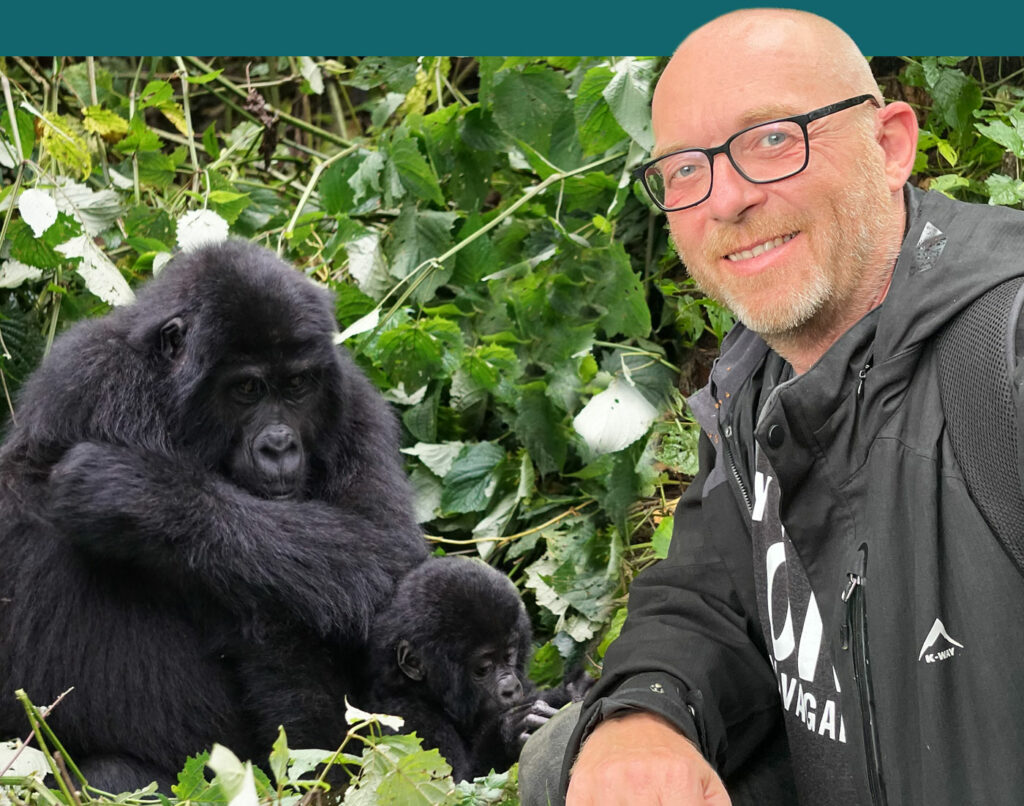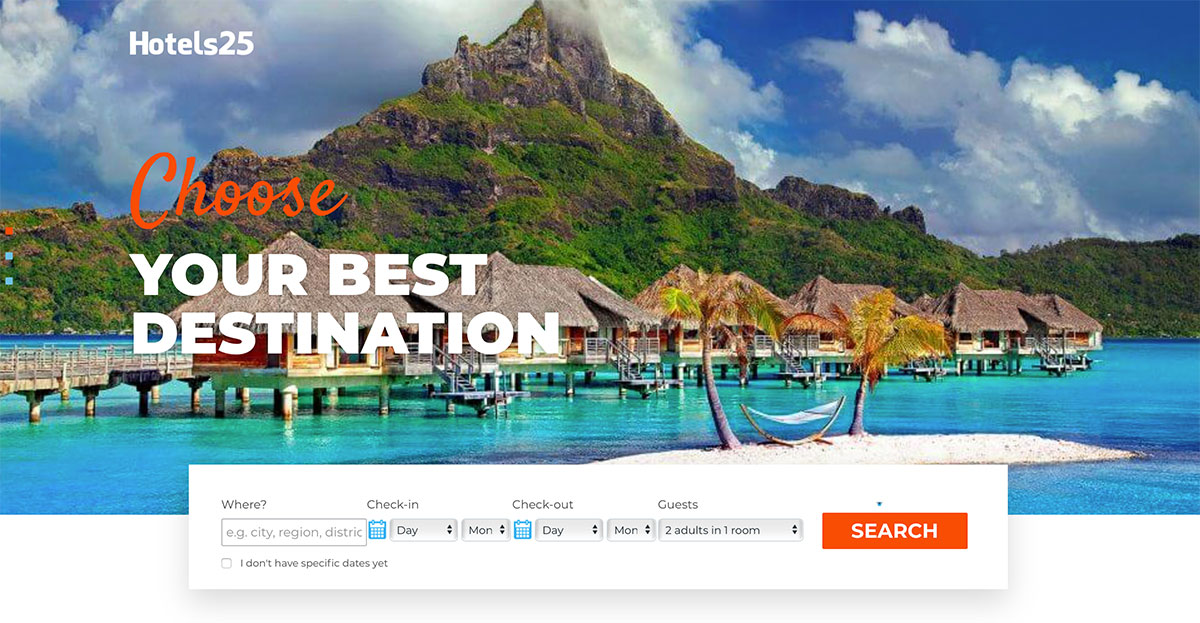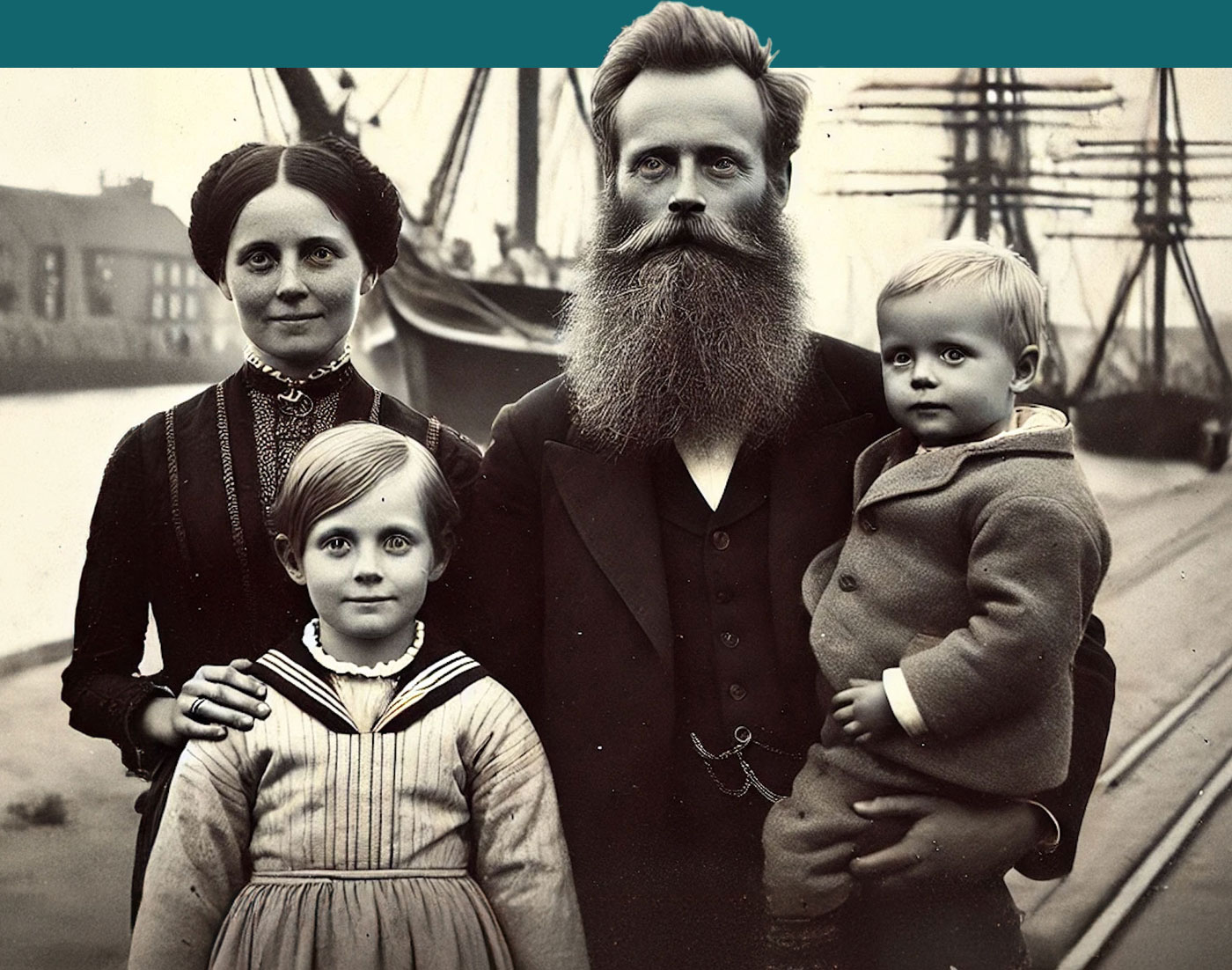Join me, as I trek through Uganda’s Bwindi Impenetrable Forest to find a family of mountain gorillas and experience the magic of observing these incredible creatures up close. Don’t miss this thrilling episode of The Radio Vagabond.
Also, you get to know Charles and Amos, both with a deep knowledge of Bwindi Impenetrable Forest and its enchanting mountain gorillas.
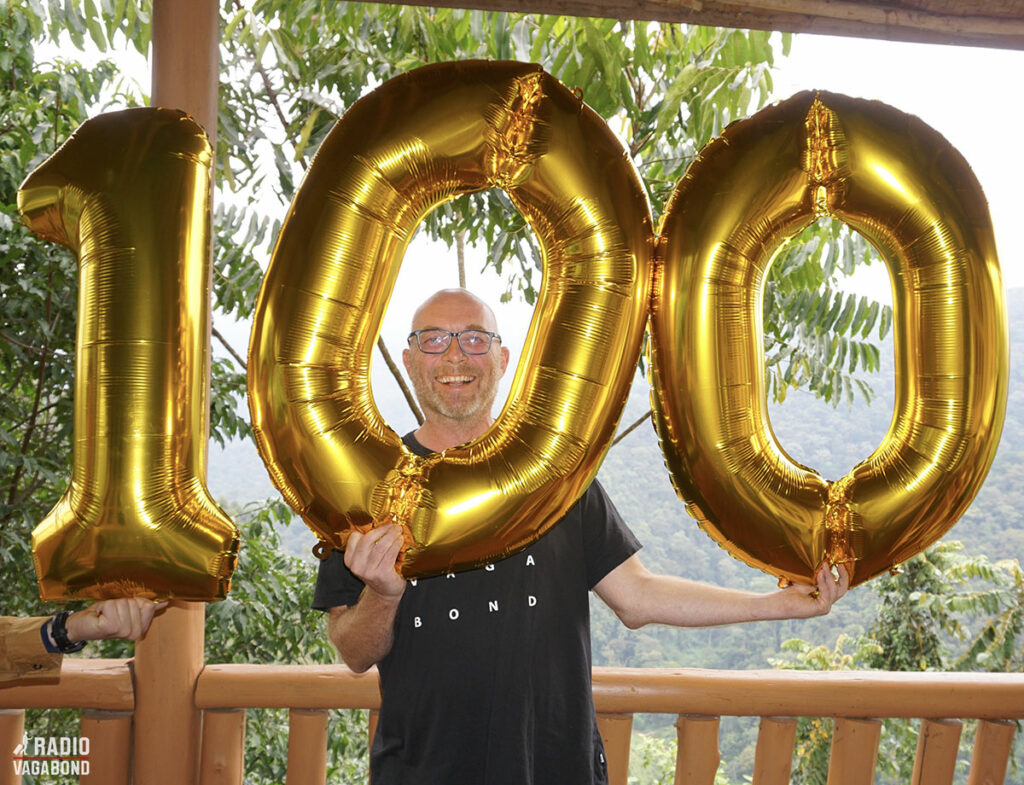
THE BEAUTY OF UGANDA
I’ve already given you three episodes from Uganda, but they were special, so, I wanted to give you two more episodes from this beautiful country. And I’m about to tick off a bucket list item.
Today, we embark on a captivating journey to Bwindi Impenetrable Forest National Park, a dense, ancient ecosystem spanning over 300 square kilometres and a true gem nestled in the southwestern part of Uganda. This magnificent rainforest is not only a UNESCO World Heritage Site but also a sanctuary for one of the world’s most endangered and mesmerizing creatures – the mountain gorillas.
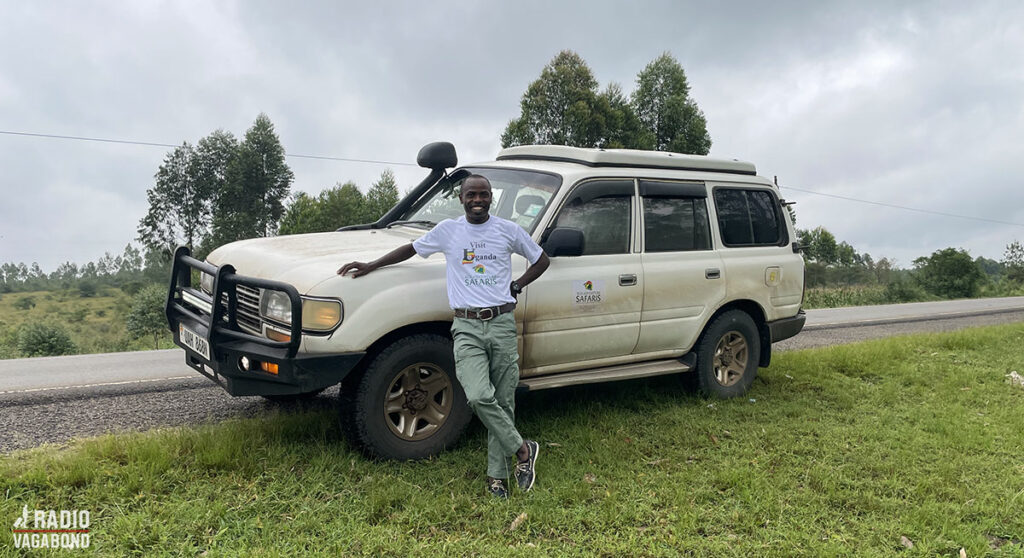
PICKED UP FOR A 10-HOUR DRIVE
I was picked up at my Airbnb in Kampala by the driver Charles from Eco Adventures Safari. It’s a three-day trip with one day driving from Kampala, one day trekking and one day driving back. We’re heading all the way down to Bwindi Impenetrable National Park in the south-western corner of the country, close to the borders of Rwanda and the Democratic Republic of the Congo.
We’re going to one of Africa’s oldest rain forests – and speaking of rain… it was pouring down when Charles picked me up.
Eco Adventure Safaris is a responsible local tour operator based here in Uganda offering eco-friendly Gorilla Trekking Tours and Wildlife safaris to Uganda, Rwanda, Congo, Kenya, and Tanzania. They have been a local operator for close to ten years, so they know what they are doing, and I felt I was in good hands. The only thing they can’t control is the traffic.
STUCK IN THE KAMPALA RUSH HOUR
As we reach a stand-still in the traffic going out of Kampala, I ask Charles if this kind of traffic is normal for this time of day here.
“Yeah, this kind of traffic is normal, but especially now, students have gone back to school, so the traffic is worse than the normal days to have been like. During COVID, there was no traffic at all. You just got any speed you want. But now we can spend like an hour in the traffic.”
DO YOU WANT A ROLEX?
Halfway on the way on the 10-hour drive Charles asks me if I felt like having a Rolex. No, he wasn’t talking about the luxury watch, but a delicious and satisfying snack that shares the same name. The Rolex is essentially a Ugandan-style omelette rolled up in a chapati, a thin and soft flatbread. The name “Rolex” is a playful combination of “rolled” and “eggs,” capturing the essence of this delightful street food.
When it comes to food, Uganda has its own unique culinary delights, and one popular street food that has gained popularity both locally and internationally is the “Rolex.”
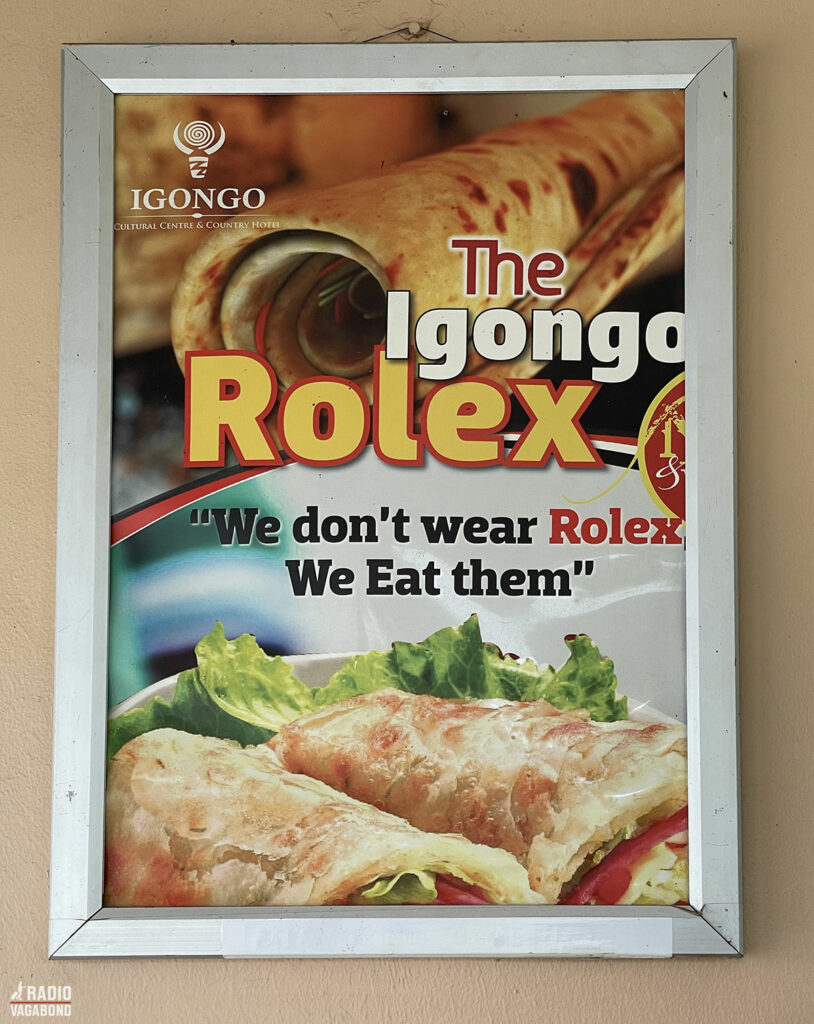
Wanna make a Rolex yourself?
Start with preparing a chapati with a mixture of wheat flour, water, salt, and oil. The dough is rolled out into thin circles and cooked on a hot griddle until it becomes golden and slightly crispy.
Next comes the star of the show – the omelette. Eggs are beaten with salt, pepper, and sometimes onions, tomatoes, or other vegetables for added flavour. This mixture is poured onto a hot greased pan and cooked until it sets into a fluffy omelette. Once this is ready, place it on top of the freshly cooked chapati. Finally, then carefully roll up the chapati, creating a neat and portable package of deliciousness.
The Rolex is not only a tasty snack but also a convenient and affordable option for people on the go. It can be enjoyed as a quick breakfast, a satisfying lunch, or a snack any time of the day.
Beyond its culinary appeal, the Rolex has also become a symbol of Ugandan entrepreneurship. Many Ugandans have taken to selling Rolexes as a way to earn a living and support their families, like we heard about in the second episode from the Acholi Quarter in Kampala.
RUSHAGA GORILLA HAVENS LODGE
In the afternoon we arrive to the place I’m going to spend the next two nights: Rushaga Gorilla Havens Lodge. It’s nestled in natural surroundings and offers a peaceful and serene atmosphere.
One of the highlights of the lodge is its stunning views. Guests can admire the breath-taking landscapes and lush greenery of Bwindi Impenetrable Forest from the lodge’s dining area. The sights and sounds of nature create a tranquil ambiance that enhances the overall experience. It’s like stepping into a living painting with an awe-inspiring panorama. I’m blown away as I enter the place and Christine from the lodge hands me a glass of fruit juice.
Rushaga Gorilla Havens Lodge provides a comfortable and welcoming retreat in the heart of Bwindi Impenetrable Forest, so I’m happy to be spending two nights here.
After a long day on the road, I had an early night so I would have a lot of energy for the next day’s hike to witness the incredible mountain gorillas in their natural habitat.
FACTS ABOUT BWINDI
- Bwindi Impenetrable National Park is located in southwestern Uganda, bordering the Democratic Republic of Congo to the west and Rwanda to the south. It’s 321 square kilometres big (124 sq mi) – about the size of Malta.
- It’s a special place recognized by UNESCO as a World Heritage Site because of its many different plants and animals.
- It’s one of Africa’s oldest rainforests, estimated to be over 25,000 years old. Its dense vegetation, towering trees, and thick undergrowth earned it the name “impenetrable.”
- Bwindi is where almost half of all the mountain gorillas in the world live – which is why we’re here. We’re about to walk in the dense forest and spend an hour watching them in their natural home.
- Bwindi is also home to many other animals, like monkeys, elephants, and other types of gorillas. And there are over 350 kinds of birds, including some that only live in this area, which makes Bwindi a wonderful place for bird watching.
- It’s home to the Batwa pygmies, one of the oldest indigenous communities in Africa. They have a deep connection with the forest and offer cultural experiences that provide insights into their traditional way of life.
- We’re close to the equator so the average temperature in Bwindi doesn’t vary much throughout the year: Around 11°C/52°F in the morning and 23°C/73°F in the afternoon.
- The best time to go gorilla trekking in during the months of June, July, August, September, and December. This is because there are less rains and the parks are drier, making it simple to hike and see the gorillas. I was there in January, so it was a bit muddy which was a bit of a challenge – but we’ll get back to that.
BEST VIEWS EVER
After breakfast at the lodge, we drove to the park headquarters for a briefing from the Uganda Wildlife Authority ranger guides.
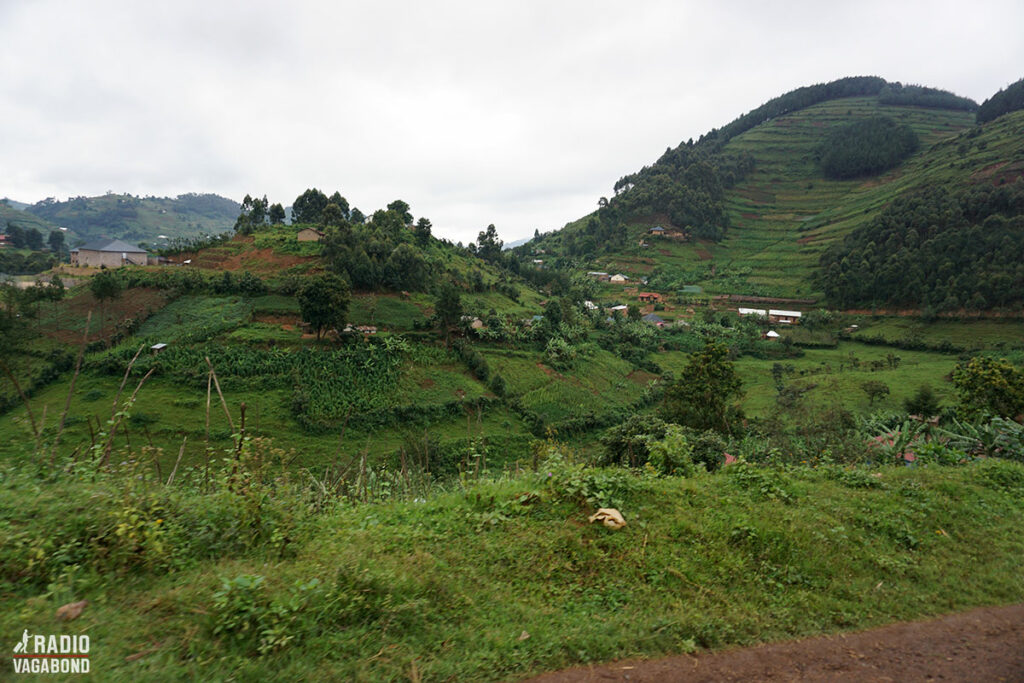
It was just me and a ranger in the car with Charles, and they have both been driving this road many times, whereas it was the first time for me.
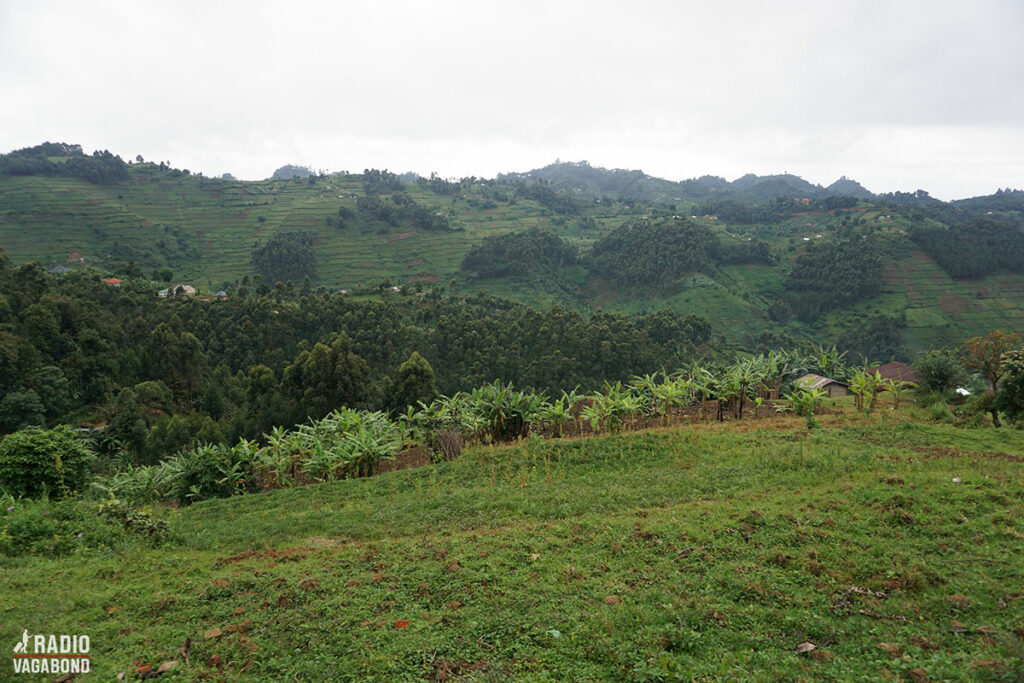
And I was blown away with the views. The landscapes are nothing short of majestic. Towering peaks and rolling hills command attention, creating a sense of awe. The countryside is a sea of lush greenery, with graceful slopes and valleys, creating a sense of movement and adding depth to the view. Each rise and dip in the land unveils a new facet of its natural beauty.
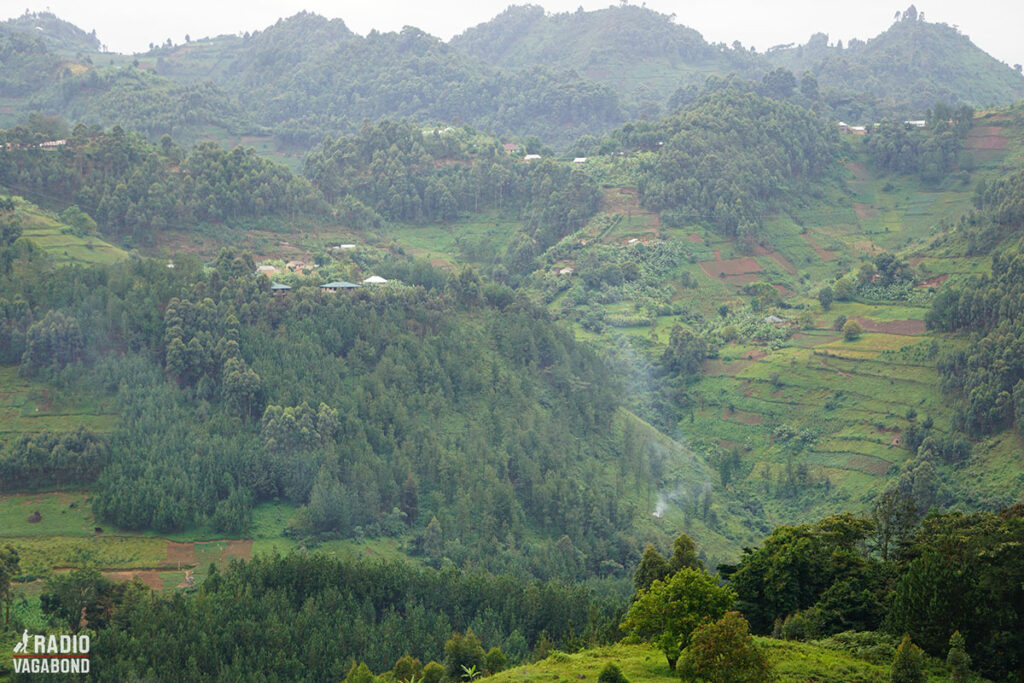
Everywhere you turn, picture-perfect scenes unfold. Rolling meadows dotted with colourful wildflowers, and quaint villages nestled in the embrace of nature’s splendour. Mist gently clings to the hills, adding an air of mystery and enchantment. Nature’s purity is on full display and the expansiveness of the landscapes is awe-inspiring as far as the eye can see.
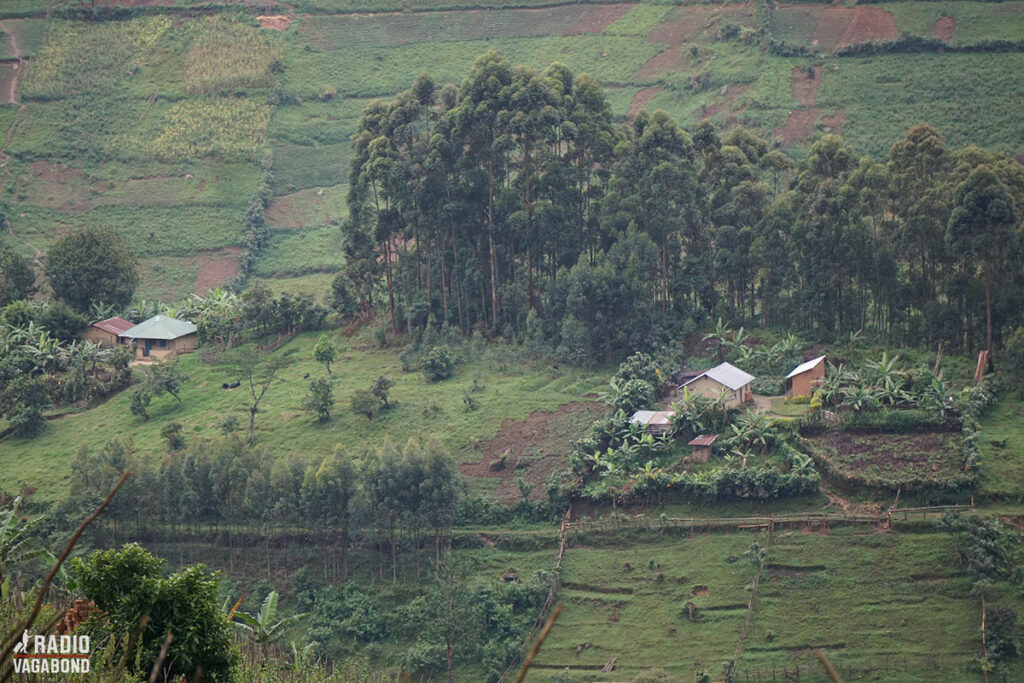
I’m thinking that I wish we had time to walk instead of driving. I’d never seen anything like this. And I have seen some beautiful landscapes around the world, but this one was the best so far.
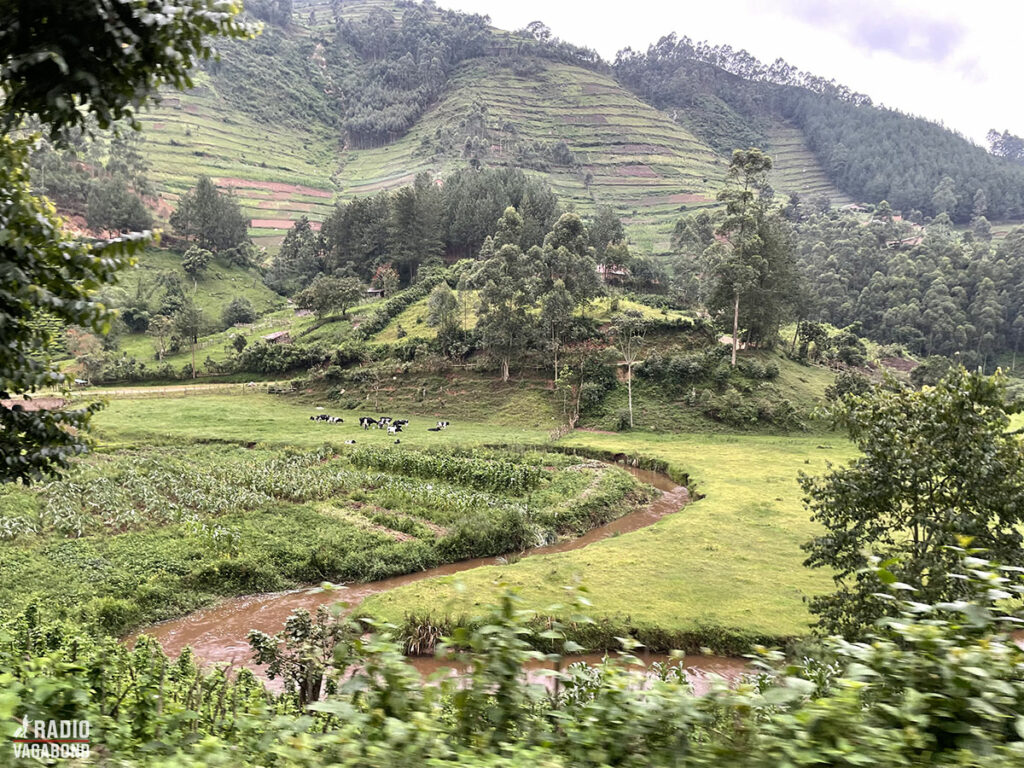
I describe how I feel to the two guys in the car. I say that they probably don’t even realize just how beautiful it is. First, they are quiet for a bit and then they say that they know that it’s beautiful but have gotten so used to it that they’d almost forgotten. They thank me for reminding them.
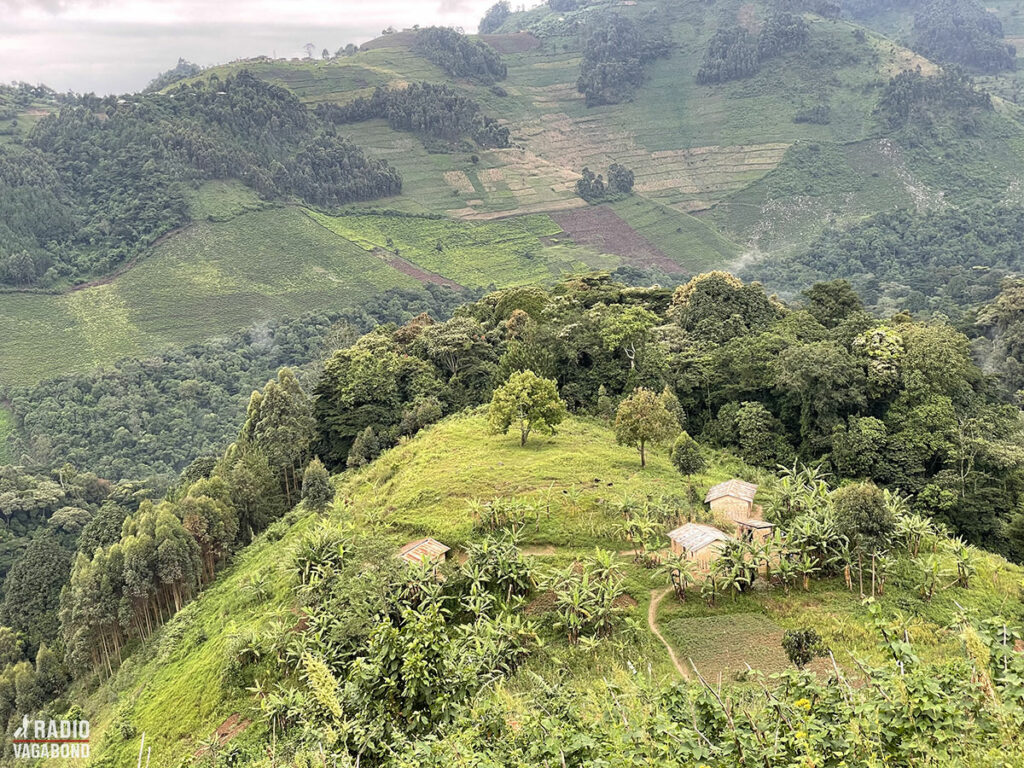
I didn’t turn on my microphone as I had this conversation. I was too busy snapping photos.
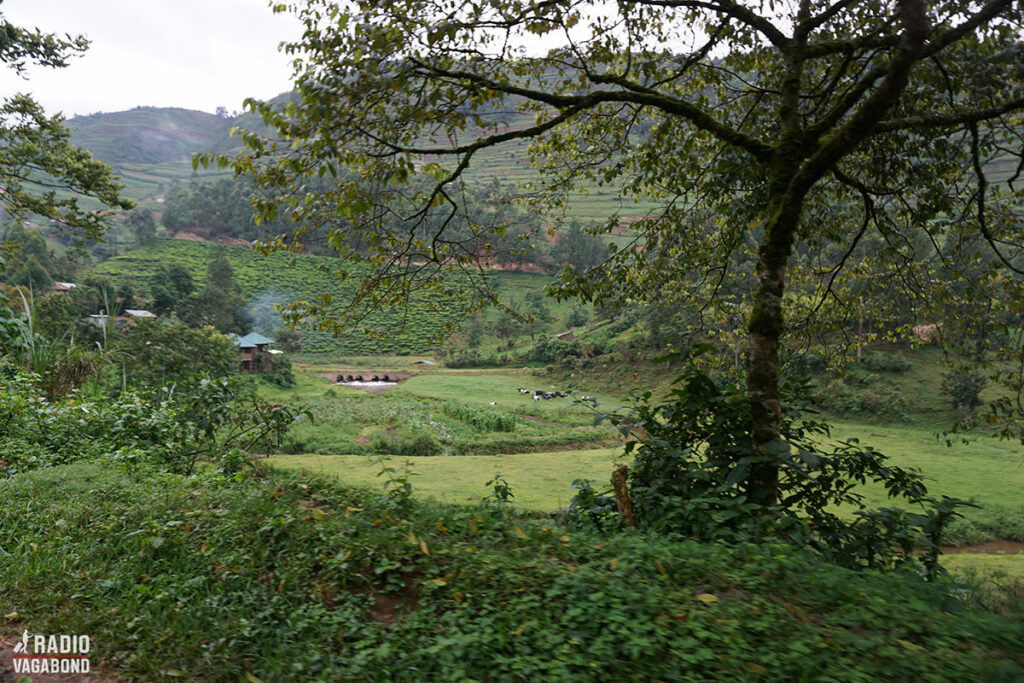
E-MAIL FROM A LISTENER
I’ve received another nice email from a listener. This one is from Julie:
Hi Palle.
I just wanted to reach out and tell you how much you have encouraged my husband and I to take the leap to full-time travel.
We have been working toward the dream of a nomadic lifestyle for a couple of years and have made major life changes to do so.
You have been an influential part of our decision-making process since we are at a similar age as you. We recently sold our house and all our belongings, quit our careers and will be hitting the road full-time.
We are looking forward to all of our travels and may see you on the road in the future. Thanks for the inspiration!
Julie
If you also want to send me a message, go to TheRadioVagabond.com and fill out the form or send me a voice message.
MEETING RANGER GUIDES
After a briefing with the entire group of people we’re divided into smaller groups of eight people, and we get to meet our two ranger guides before they lead us into the thick impenetrable forest to start our search for the rare Mountain Gorillas.
One of them, Amos is telling us to make sure we have enough power and space in our cameras for photos. Because there’s going to be a lot to take pictures of.
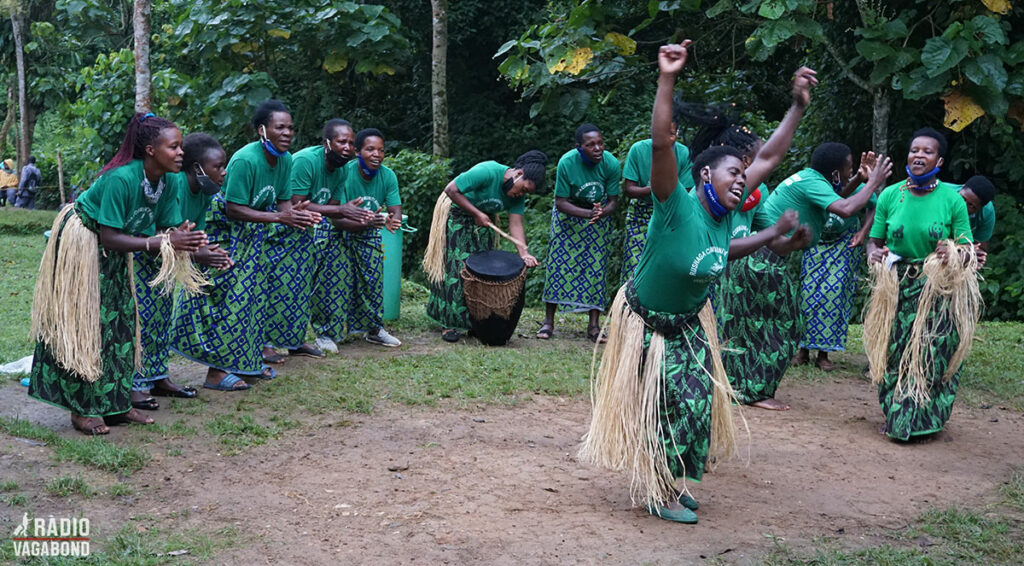
We’re on a small group of eight people plus the guides, Nathan, Aaron, Erin, Martin, Duffin, Aman – and me.
Amos told us that there’s a 99% guarantee that we will find the gorillas. I was wondering how they are able to give that promise in a big rainforest like this one. Have they put a GPS tracker on them? But Amos told me that they haven’t. They are just good at their job and very well organized.
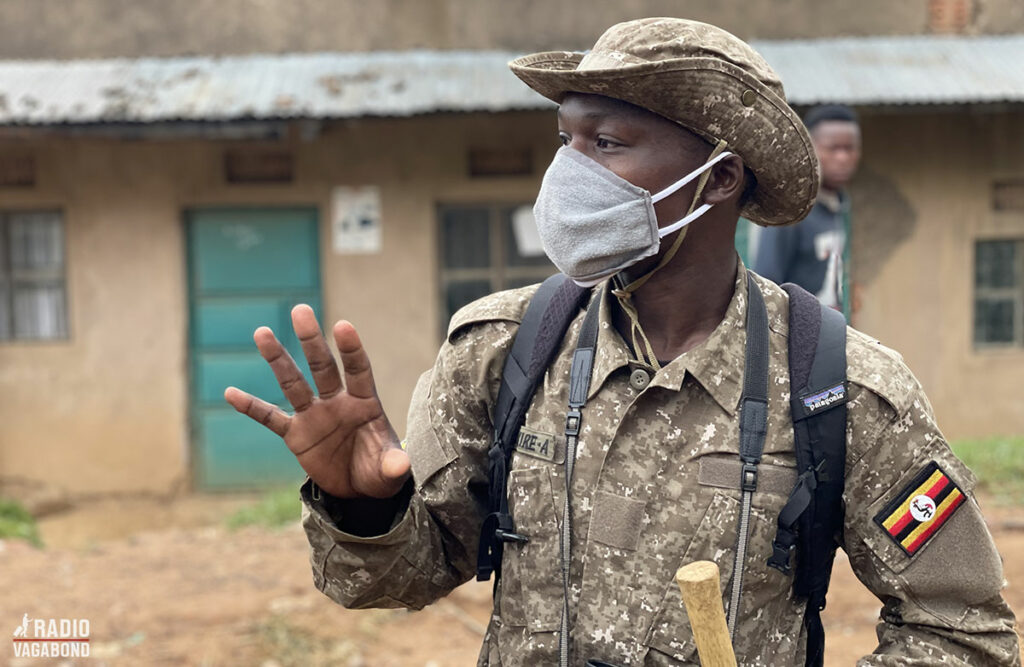
The trek is guided by experienced trackers who monitor the gorilla movements all day in the forest – 16 hours a day, every day, rain, or shine. That way they know where the gorillas spent the night. They are very experienced and know a lot about the gorilla families, their preferred areas, and their movement patterns. And trackers head out early in the morning and follow signs such as tracks, dung, broken vegetation, and vocalizations to locate the gorilla groups.
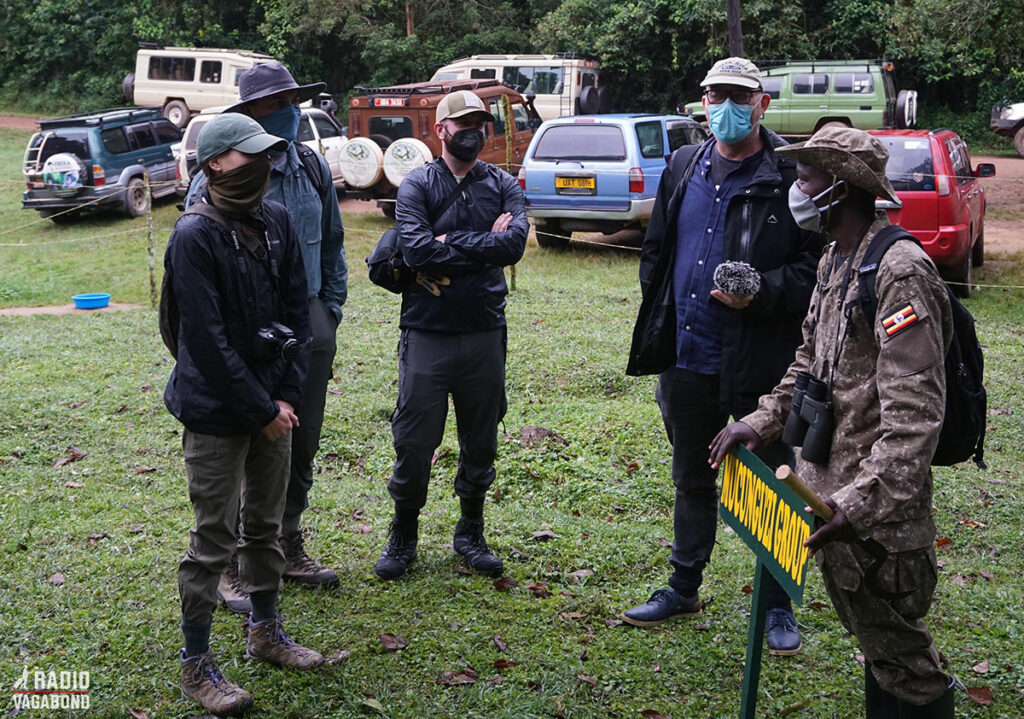
They are in radio contact with Amos and the other guides, so we know where to go. Our ranger guides are leading us through the trek clearing trails, creating new trails with machetes, and sharing information about the mountain gorillas and Bwindi Forest throughout the trek.
WALKING AND TALKING WITH AMOS
Amos tells me that the family we’re visiting is called “the Machunguzigurita family,” and it’s a family of 14 gorillas. There are some babies, a couple of mums, and one dominant male.
I find it interesting that there are fourteen and just one big male. Amos tells me that this is normal.
“Yes. The number in the group changes all the time and if it’s too big for one male, some individuals switch from their original family and join the other families. So, the group changes all time. Females going in, females going out, some dying, some giving birth.”
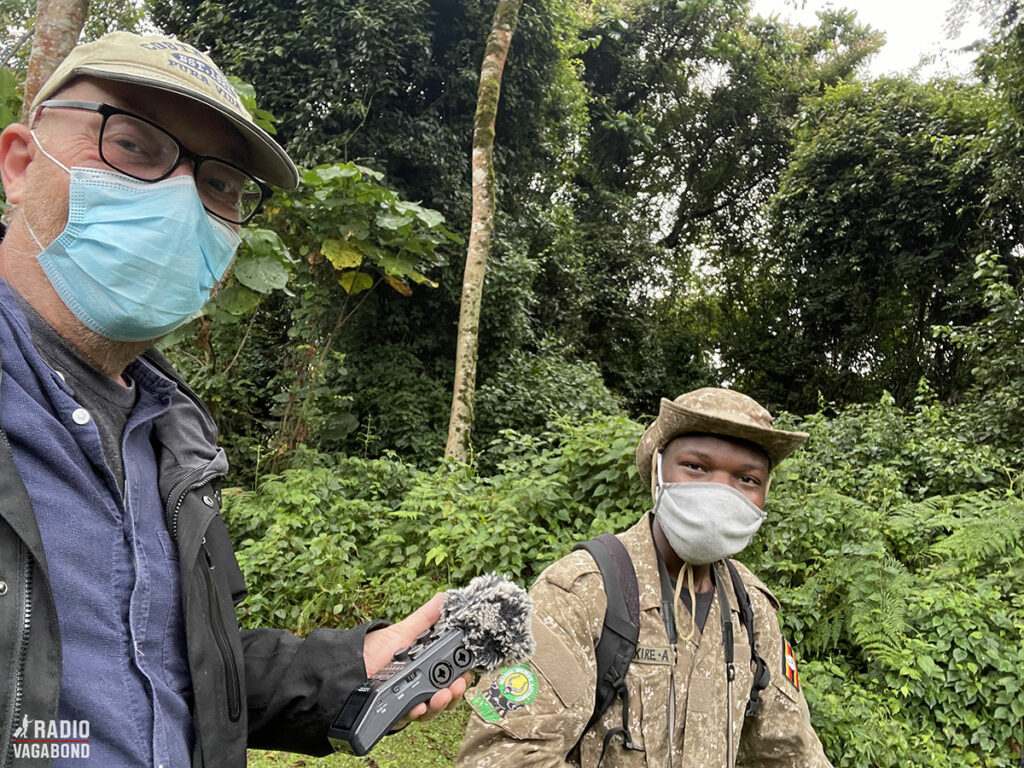
Some females also transfer to a different family because they don’t want to make baby gorillas with their own brothers and father. They need to separate from their families, Amos tells us.
”In most cases, females that are ready to get pregnant, leave their families and join new silverbacks. This can also be during a friendly interaction with other families. “
Amos that been doing this for nine years and in that time a lot of good things have happened with the gorillas.
“We’ve had newly born babies, especially during COVID. So, the pandemic has actually been good for the gorillas, because they’ve had less stress, and have been freer to move around. But we always had to visit them on a daily basis – even during COVID. We did not stop. This is our daily job.”
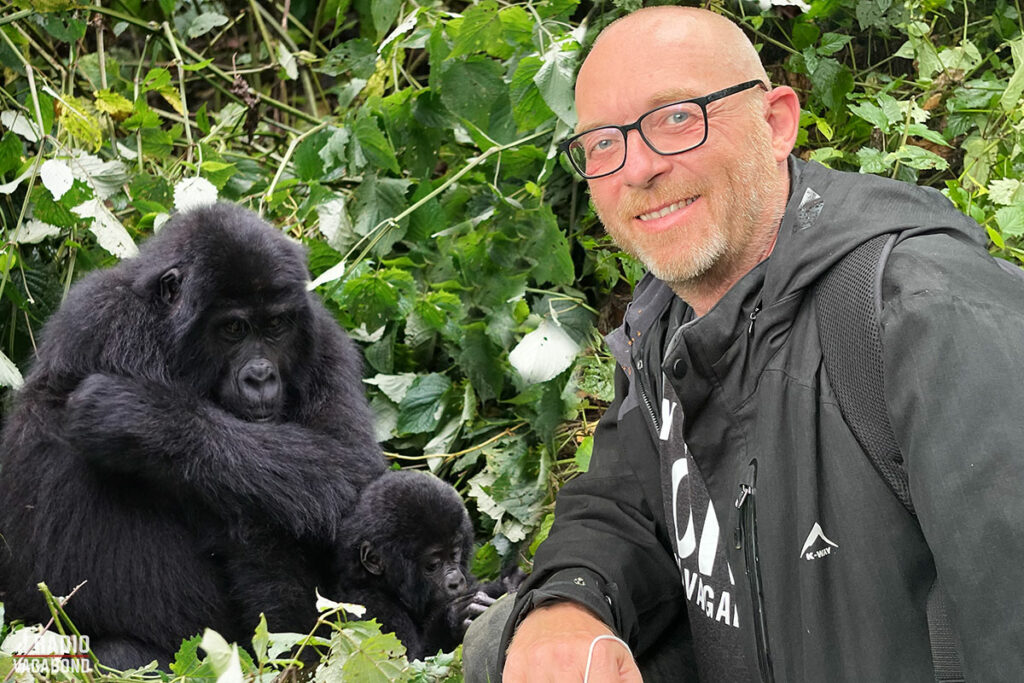
CLOSE ENCOUNTER WITH THE GORILLAS
And after hiking through the forest for a bit more than an hour we find them. Within our group of gorillas, we encountered a merry band of gorilla-kids showcasing their acrobatic skills, swinging from branches like jungle gymnasts and tumbling through the foliage with the grace of… well, gorillas. Some of the females were taking a well-deserved siesta, while one of them lovingly cradled her teeny, tiny offspring. And then, in the heart of it all, was the king of the jungle – the dominant Silverback, leisurely munching on leaves and keeping an eye on everything.
These magnificent creatures seemed to be putting on a show just for us. They were all cool with our presence, striking their best poses and giving us front-row seats to their gorilla extravaganza. It was like they had been rehearsing their acts for a sold-out crowd of awe-struck humans.
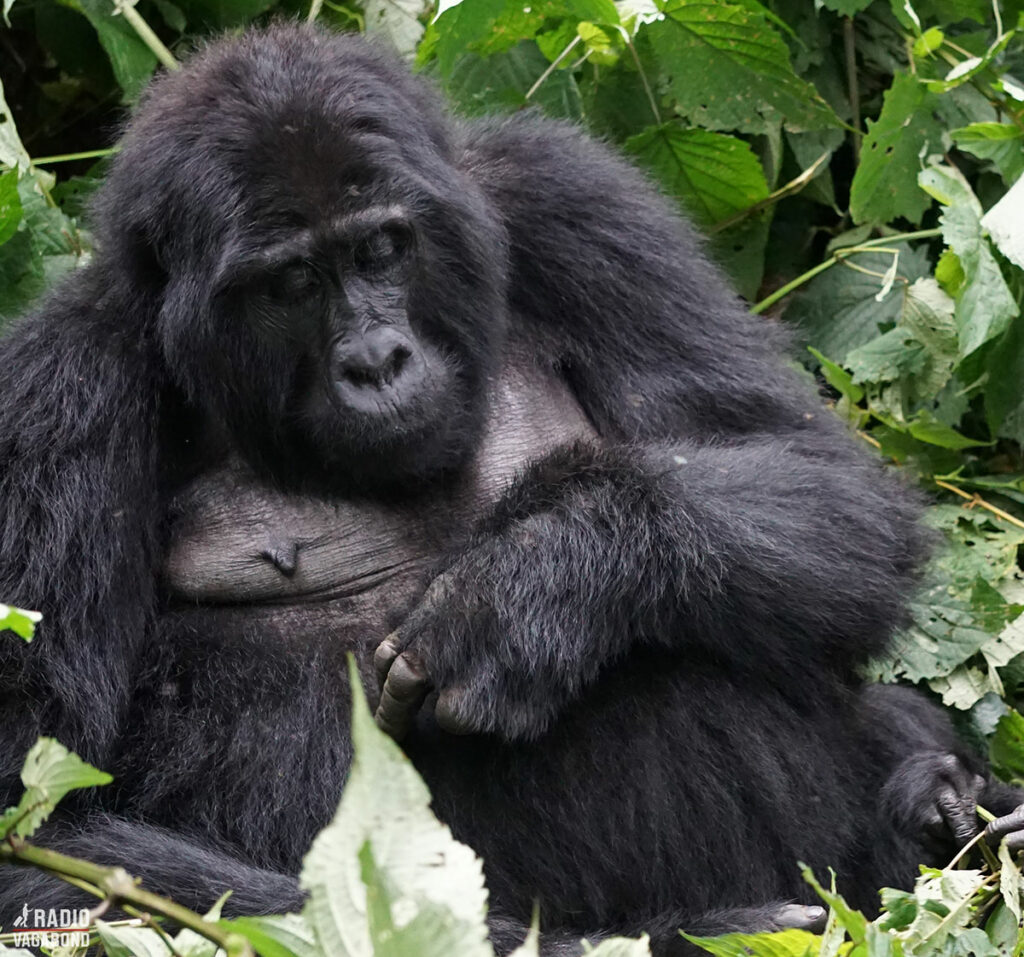
One of the small gorillas tried to imitate the Silverback and did his best to beat his chest like King Kong. He still needs to practice for a few years, but it was so adorable.
Amos tells us that he’s imitating the grown-ups in the family – and a sign of excitement.
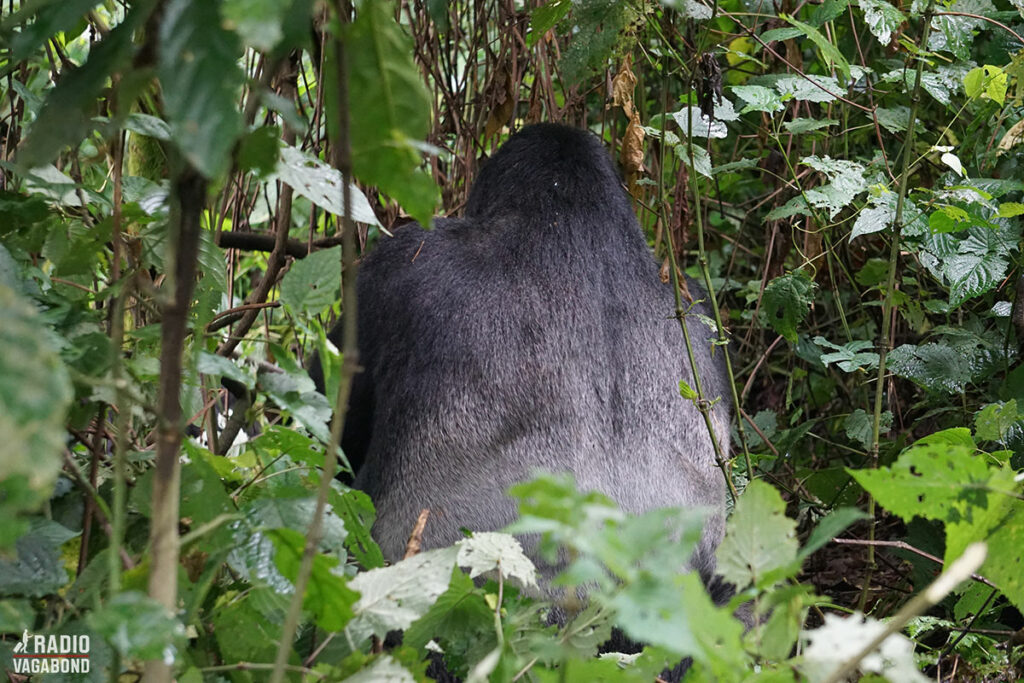
THE SILVERBACK IS THE BOSS
Mountain Gorillas live in social groups called troops, bands, or families, as Amos called them. Typically, there are several adult females, their offspring, maybe some subordinate males, and one big silverback male, the group leader.
Males like him weigh between 135 to more than 200 kilograms (300 to 450 pounds) and measure about 1.7 to 1.8 meters (5.6 to 5.9 feet) when standing upright. And as Amos mentioned, he’s as strong as nine men. So, we were told not to hug any of his women.
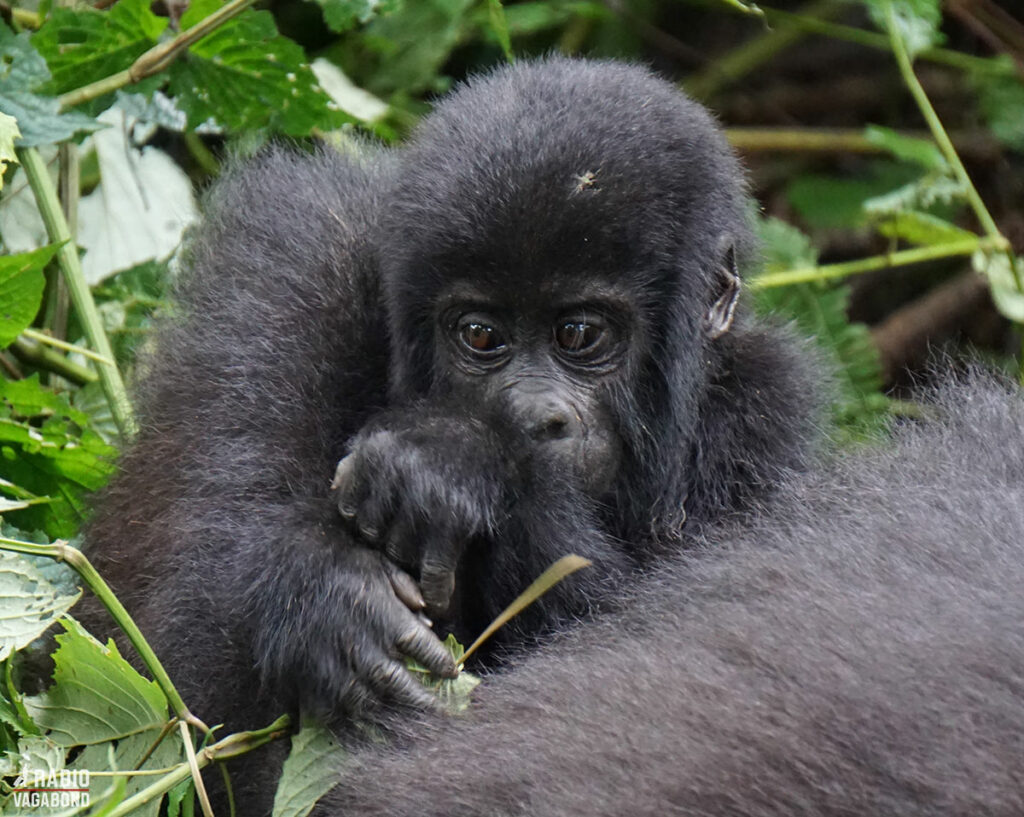
He’s the alpha male and one of his responsibilities is to protect the group from external threats. He’s the primary defence against predators, such as leopards or other gorilla groups getting into their territory. If that happens the silverback will fiercely defend their group and engage in physical combat if necessary, using their size and strength to deter rivals or predators.
He’s the center of the gorilla group’s social structure and maintains social order, resolves conflicts within the group, and ensures the well-being of its members. He uses different ways of communicating with other gorillas. When threatened, he may show aggressive behaviours, like chest-beating, shouting, and charging. This is mostly just to scare the potential threats away, rather than actually going into a fight.
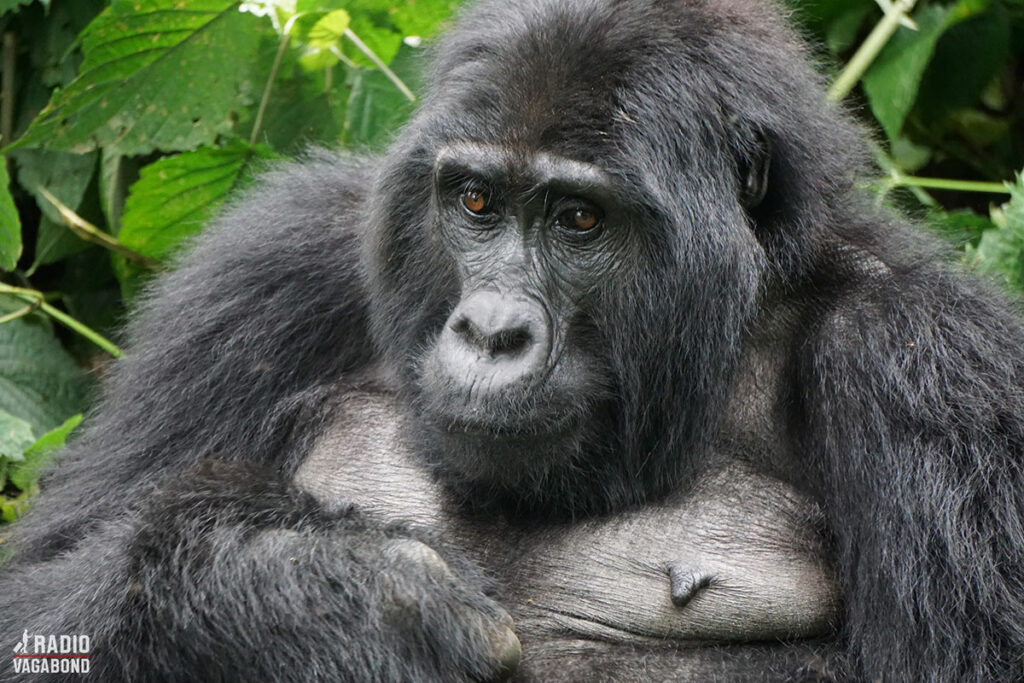
In a few words: The Silverback is the boss. The decision maker – something that we got to see a bit later.
We were told that we were only allowed to interact with them for one hour, and that we should keep silence while being with them. But we got to take a lot of photos.
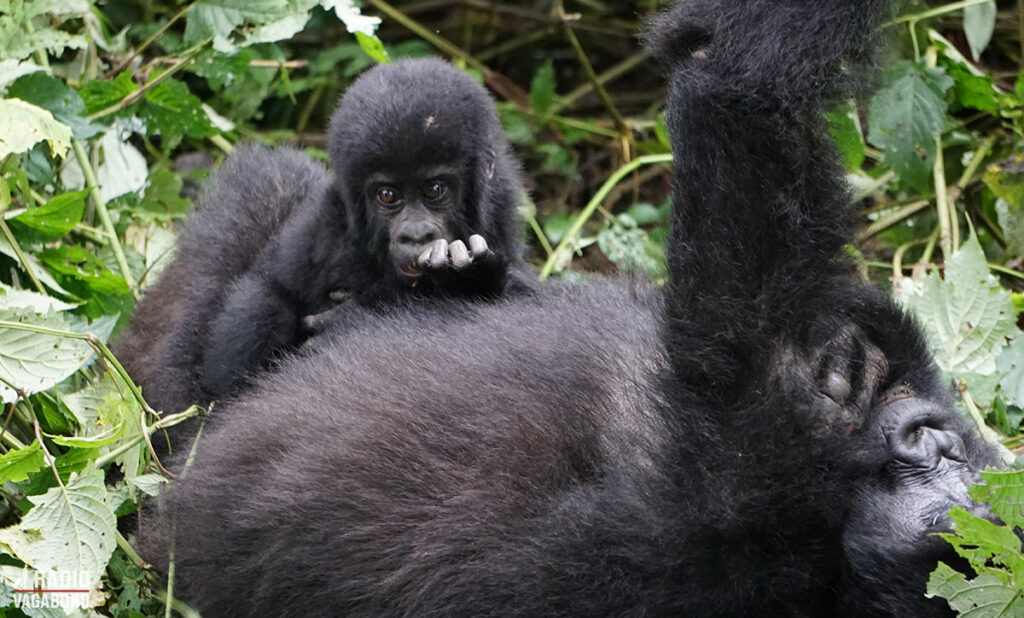
THAT’S ALL FOLKS, SHOW’S OVER
The hour whizzed by in a flash, leaving us yearning for more. But it’s as if the Silverback had an internal gorilla clock, because right on cue, after a precisely timed 60 minutes, he rose to his feet. Without missing a beat, he snatched one of the unsuspecting female gorillas by the arm and swung her along as he wandered away in a fast pace. She didn’t see it coming, poor thing. It was as if he declared, “Alrighty then, show’s over, folks! Time to hit the road.”
The hour felt like five minutes. But, how time flies when you’re in the presence of greatness. It was a truly magical encounter with these remarkable creatures. They had us captivated, entertained, and emotionally invested in their gorilla drama. And just like that, the curtain fell on the performance. But the memories of that one hour will stick in my mind forever, reminding me that sometimes, the greatest shows are the ones that unfold in the wild.
LUNCH AND REACTIONS
After witnessing these magnificent creatures chow down on their leafy delicacies, it was time for us to refuel. So, in a cosy clearing right next to where we mingled with the gorillas, we sat down, ready to tackle the most important meal of the day – a good ol’ sandwich and a trusty bottle of water.
I decided to walk around with my microphone having a word with the group about what we just witnessed. Here are some of the things that was said:
“It’s absolutely incredible. I didn’t think we were going to be able to get that close to all the gorillas. We were basically within a reaching distance of a silverback.”
”It was incredible. I didn’t expect them to be so natural around us. And, I mean, I know they said that they are accustomed to seeing humans, but to see that the babies playing and feeling that comfortable. And just doing what they do every day that close in proximity to us was just astounding, I thought.”
“The size of the silver back was insane. And he had his silver back turned, just to make sure we could see. I want to ask him for his forearm exercises because those were wonderful.”
”I’m actually a little sad that I didn’t get to pick up a baby because they were so cute. The babies are the best part. It was amazing. Magical. You were ready to hug them.”
”It was amazing how human-like they are. I thought that was incredible. That and the strength of the silverback throwing the other one.”
MORE TO COME FROM THE TRIP
In part two of my Uganda Gorilla trip episodes, we’re going down again on slippery, muddy tracks. In fact, they are so slippery – and I’m not wearing proper hiking shoes with traction, I end up falling close to 20 times and also fall off the mountain.
I’ll also teach you some important words the local Luganda language. And then I’ll tell you about something awful that happened on this trip. Something that would make my life as a digital nomad very challenging for months ahead.
That and much more, next week on The Radio Vagabond.
Thanks for having me in your ears. If you like what you’ve heard, please tell a friend. My name is Palle Bo and I gotta keep moving. See you.
LINKS AND RESOURCES
Uganda, Rwanda, and Congo are the only countries where it is possible to visit mountain gorillas. Here in Uganda, permit costs vary depending on the season. In April, May and November, permits are $450. The rest of the year, they cost $600. In contrast, permits in Rwanda now cost $1,500 year-round.
If you consider going gorilla trekking in Uganda yourself, reach out to my friends at Eco Adventures Safari. And please tell them, I sent you.
Try a Ugandan-style omelette rolled up in a chapati called a Rolex.
Spend the night at Rushaga Gorilla Havens Lodge nestled in natural surroundings and offers a peaceful and serene atmosphere – and a stunning view.
Consider visiting Bwindi Impenetrable National Park during the months of June, July, August, September, or December for drier weather and better gorilla trekking conditions.
Ensure that your camera is fully charged and has enough space for photos before embarking on the gorilla trek with Uganda Wildlife Authority Ranger guides.
Support the Rushaga Community Handicraft Association by purchasing their handmade crafts when visiting the national park.
Donate to organizations that support the conservation of mountain gorillas, such as the Dian Fossey Gorilla Fund or the International Gorilla Conservation Programme.
JEG VIL GERNE HØRE FRA DIG
Fortæl mig hvor er du, og hvad du laver lige nu, mens du lytter til denne episode. Du kan enten sende mig en email på lytter@radiovagabond.dk eller udfylde formularen her på Radiovagabond.dk.
Eller sende en stemmebesked ved at klikke på banneret herunder.

Uanset hvad du gør, vil jeg meget gerne høre fra dig. Det er altid sjovt at høre, hvem der sidder ude på den anden side af højttaleren.
DEL MED EN VEN
Har du en ven, der også er interesseret i at rejse og få inspiration til at komme ud og opleve verden? Så del denne episode. Send en besked eller ta’ telefonen og fortæl om den. Du kan også bare klikke på en af de farvestrålende knapper herunder.
SPONSOR
Som altid tak til min sponsor, Hotels25.dk. Det er et sted, du altid kan finde de bedste priser på overnatning rundt omkring i verden. Og det er garanteret den bedste pris.
RADIOGURU
Radiovagabond er produceret af Radioguru, som også kan hjælpe dig med at starte din egen podcast.
